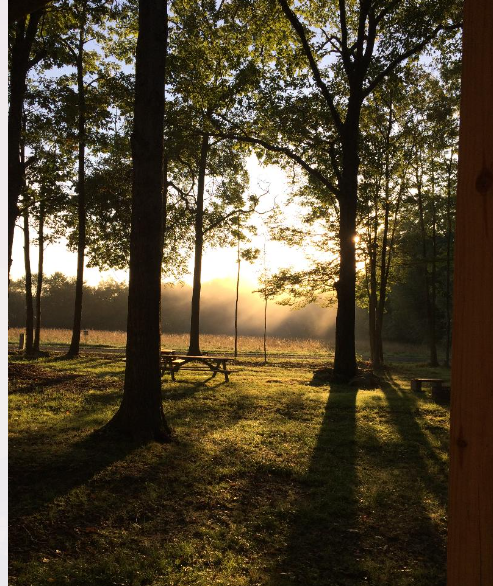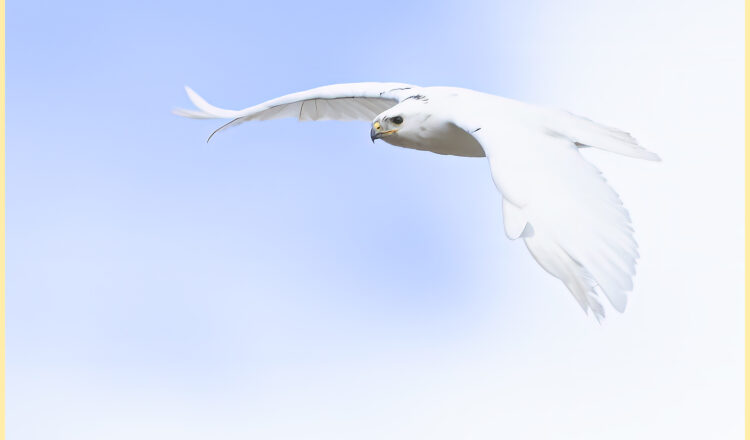Photo Gallery and Story by Photographer Dan Jordan
Usually, we speak of favorite birds by species, not by individual birds. Myself, being a bald eagle specialist, I can and do identify individual eagles by unique markings and/or nest locations occasionally, but not often. When it comes to the rest of the bird species, I rarely get a chance to make acquaintances with individuals.
Enter a special red-tailed hawk into my life in 2021. ( I mistakenly said in a FB post that I had been photographing this hawk for 6 years, it turns out that it is really 4 years. My memory is not my strong suit any longer.) A friend and property owner told me of a large white bird on her land and asked if I would lend a hand in identifying it for her. It took me a couple of visits to see the bird and then I had to seek help from the ABA (American Birding Association) to identify it.
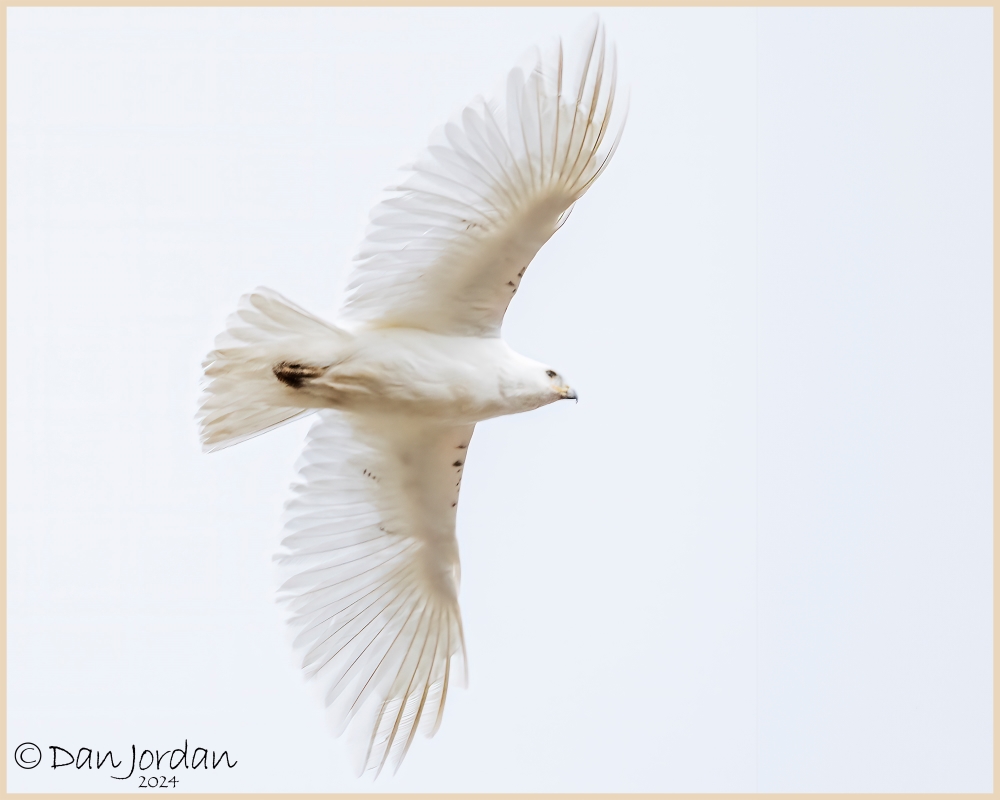
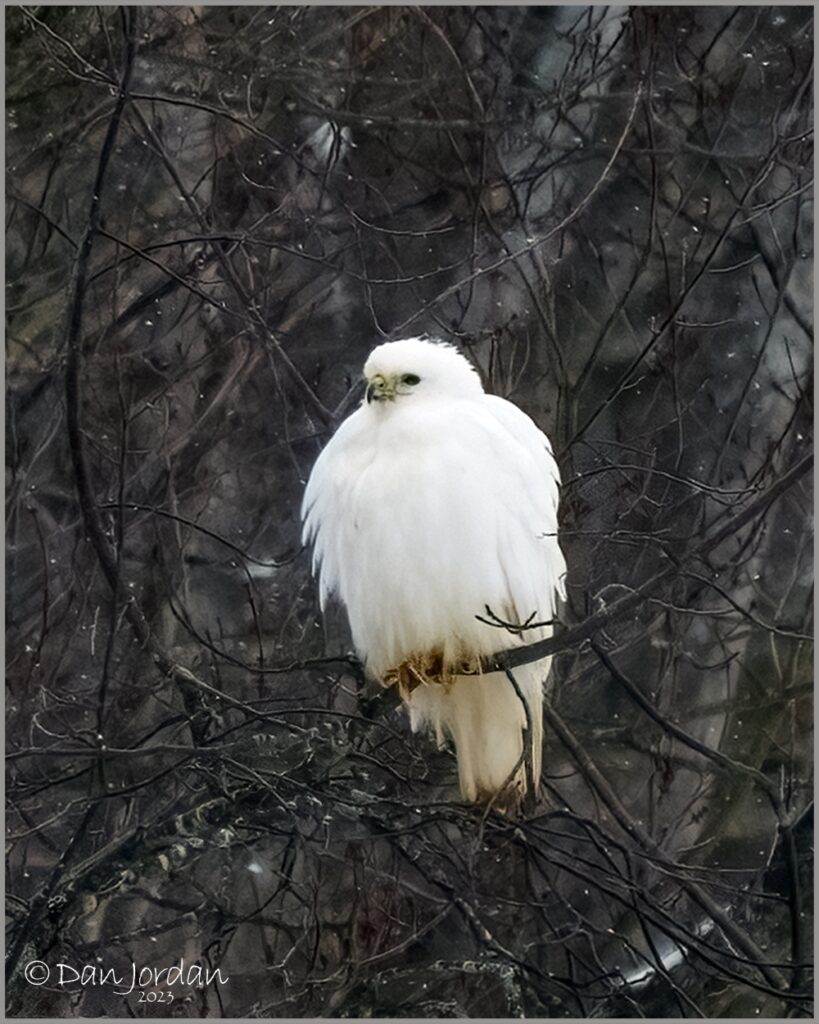
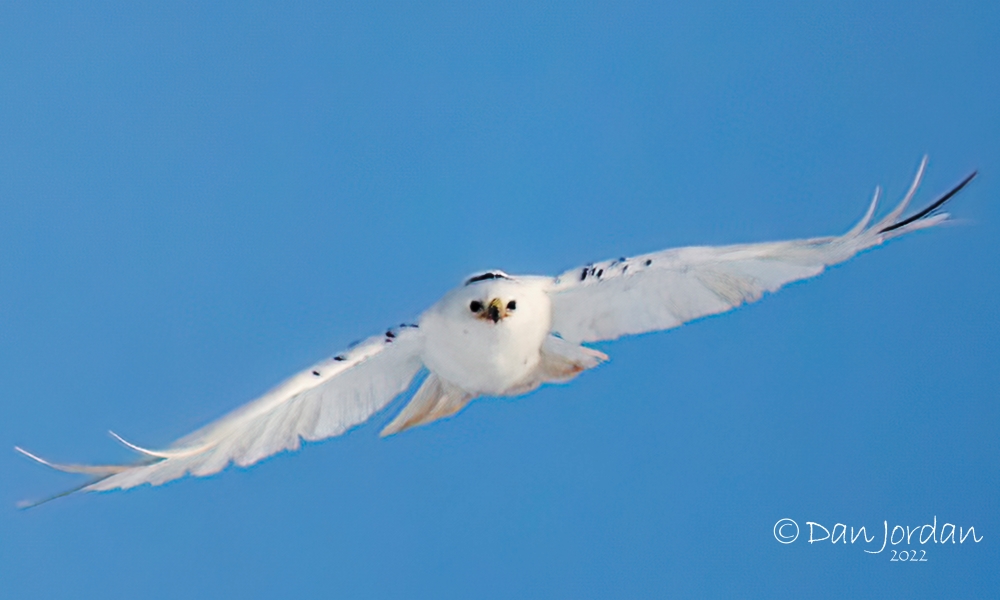
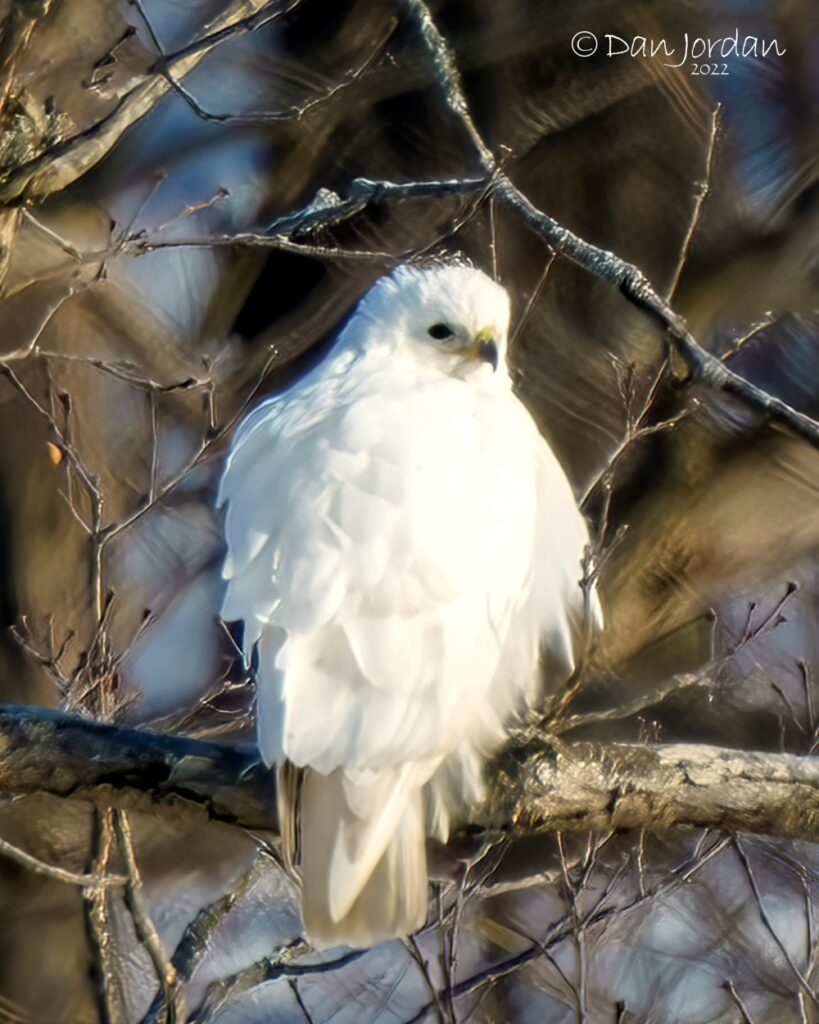
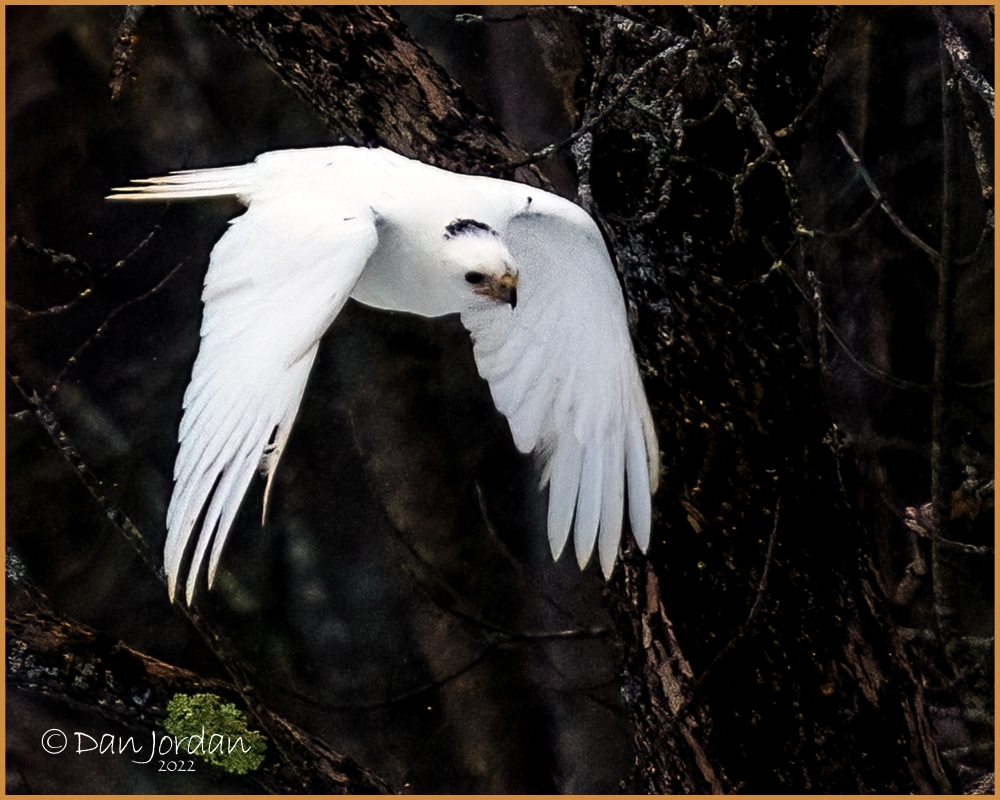
It turned out to be a leucistic red-tailed hawk, a nearly all white bird. Leucism is a genetic condition which results in a lack of pigmentation in the feathers. Leucism can happen in varying degrees. Piebald is a form of leucism where a portion of the feathers (or fur for a mammal) is white. It is rare to see a nearly all-white specimen.
I have been photographing this hawk, I affectionately call Lucy (short for leucistic) regularly since I first discovered its location. I have not been able to determine Lucy’s sex, but I have seen Lucy with its mate on numerous occasions. The mate is normally pigmented, as can be seen in the included photo. Though I look in the surrounding areas for Lucy, I have only spotted the hawk in a single location, about a 4–5-acre expanse of forest, pasture, and an old orchard.
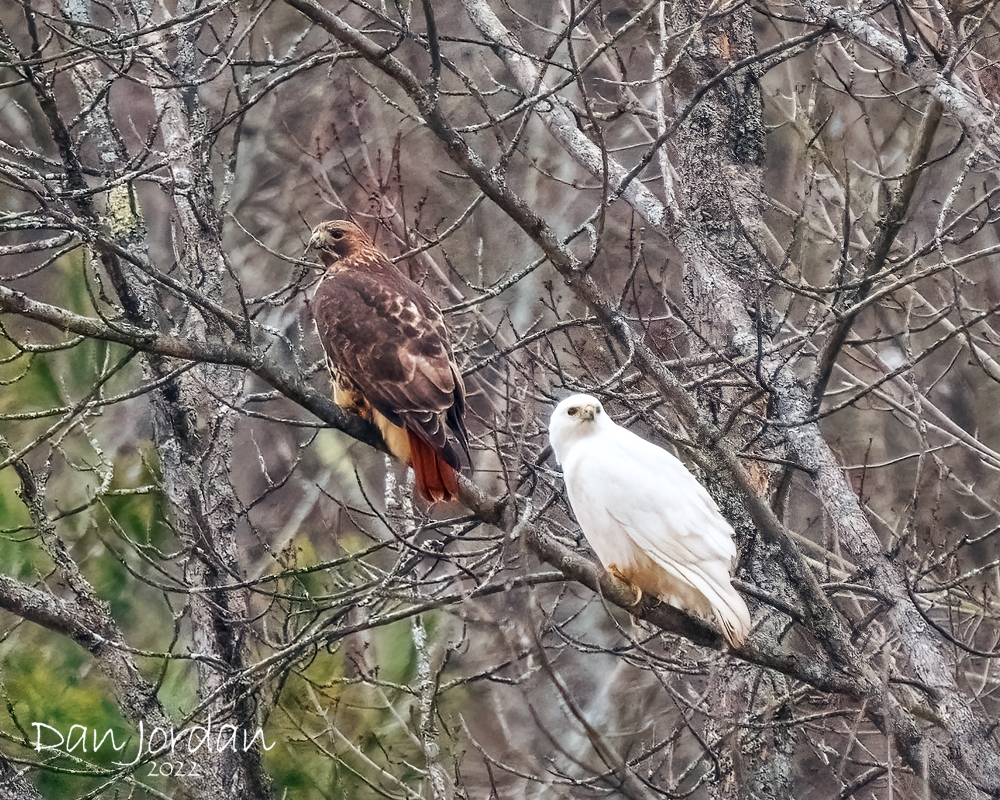
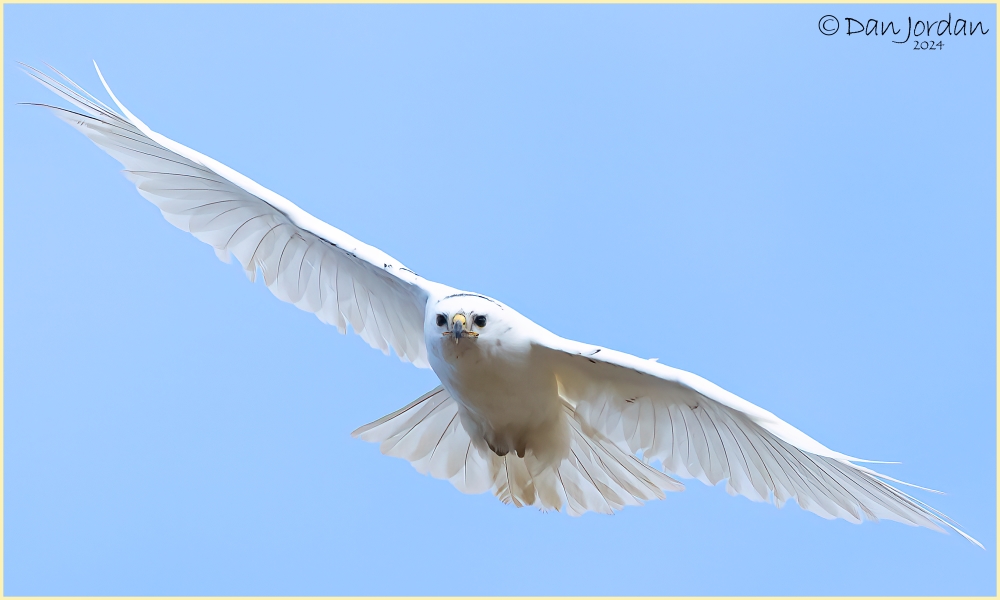
One year, I was sure that I had identified a second leucistic hawk at the same location. I presumed it to be an offspring of Lucy but had no way to verify that. I saw the two for one season and then never again saw the second hawk. This seems congruent with it being an offspring, which has then moved on to define its own home location, elsewhere.
Even after over 11,000 photos of Lucy, I still get excited when I get the chance to photograph the hawk. My latest encounter, photos included, went like this.
I did not see the hawk when I arrived on the scene on March 27. I did spot an American kestrel perched in a tree and was photographing that bird, when out of the corner of my eye I saw a flash of white. Lucy swooped down from the tree line in my direction, then circled overhead for over 5 minutes, giving me the opportunity for some amazing closeup shots.
I hope to continue to have opportunities to photograph Lucy for years to come. Nature provides such beauty, and not many more beautiful than this amazing hawk.

